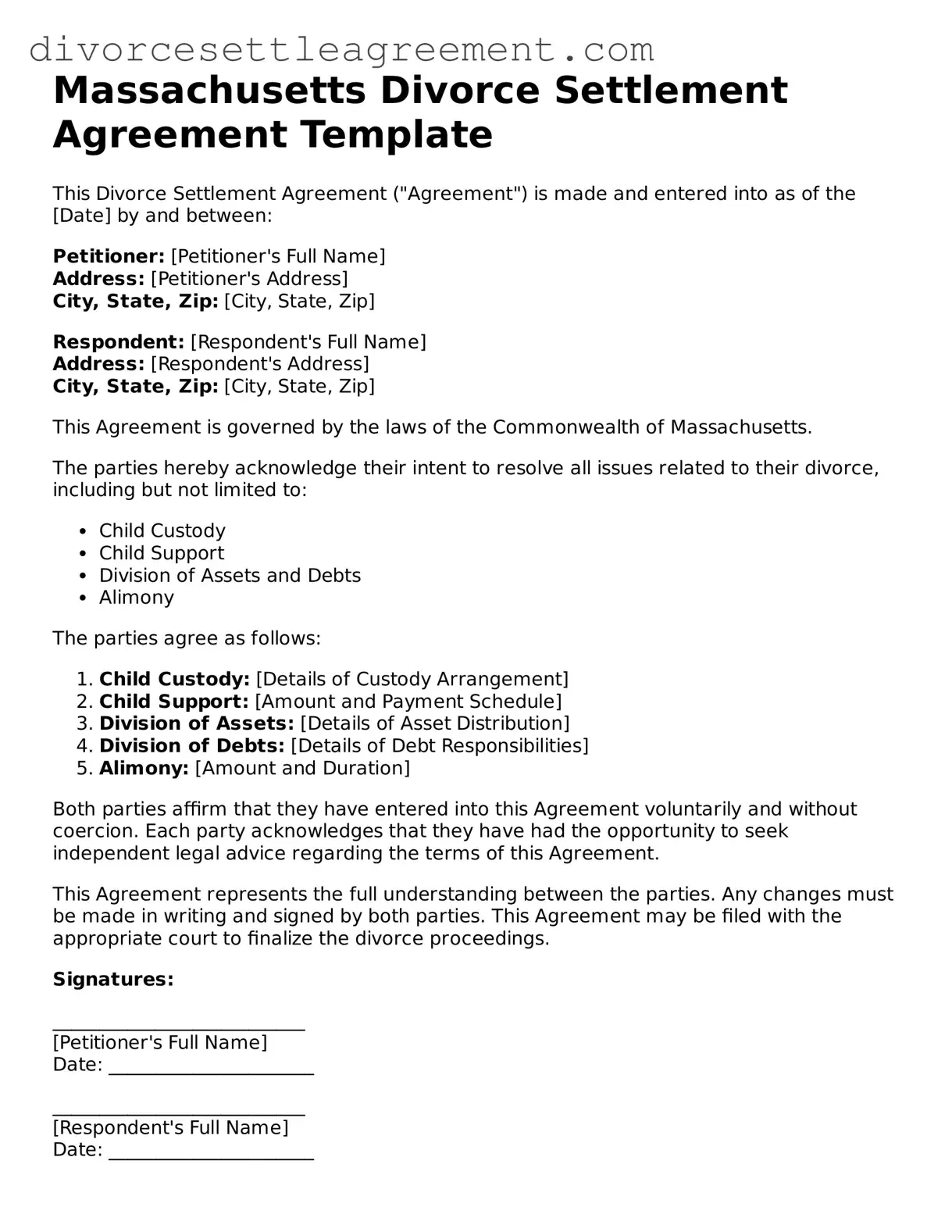What is a Massachusetts Divorce Settlement Agreement?
A Massachusetts Divorce Settlement Agreement is a legal document that outlines the terms of a divorce between two parties. It details how assets, debts, child custody, and support will be handled. This agreement is crucial for ensuring that both parties are in agreement on these matters, which can help avoid future disputes.
Who should use a Divorce Settlement Agreement?
This form is typically used by couples who are going through a divorce in Massachusetts and have reached an agreement on how to divide their property and responsibilities. It is suitable for both contested and uncontested divorces, though it is especially beneficial in uncontested cases where both parties are in agreement.
What should be included in the Divorce Settlement Agreement?
The agreement should include details about the division of marital property, allocation of debts, child custody arrangements, visitation rights, and child or spousal support. Each section should be clear and specific to prevent any ambiguity that could lead to disputes later on.
Is the Divorce Settlement Agreement legally binding?
Yes, once both parties sign the Divorce Settlement Agreement, it becomes a legally binding contract. However, it must be submitted to the court for approval as part of the divorce process. The court will review the agreement to ensure it is fair and reasonable before finalizing the divorce.
Can the terms of the Divorce Settlement Agreement be modified?
Yes, the terms can be modified, but both parties must agree to the changes. If circumstances change significantly, such as a job loss or a change in the needs of children, a court may allow modifications to child support or custody arrangements. It is advisable to document any changes in writing and submit them to the court for approval.
Do I need a lawyer to create a Divorce Settlement Agreement?
While it is not legally required to have a lawyer, it is highly recommended. A lawyer can help ensure that the agreement is fair, comprehensive, and compliant with Massachusetts law. They can also provide guidance on potential issues that may arise during the divorce process.
Where can I obtain a Massachusetts Divorce Settlement Agreement form?
The form can typically be obtained from the Massachusetts court website or directly from the local courthouse. Many legal aid organizations also provide resources and templates for individuals looking to draft their own agreements.
